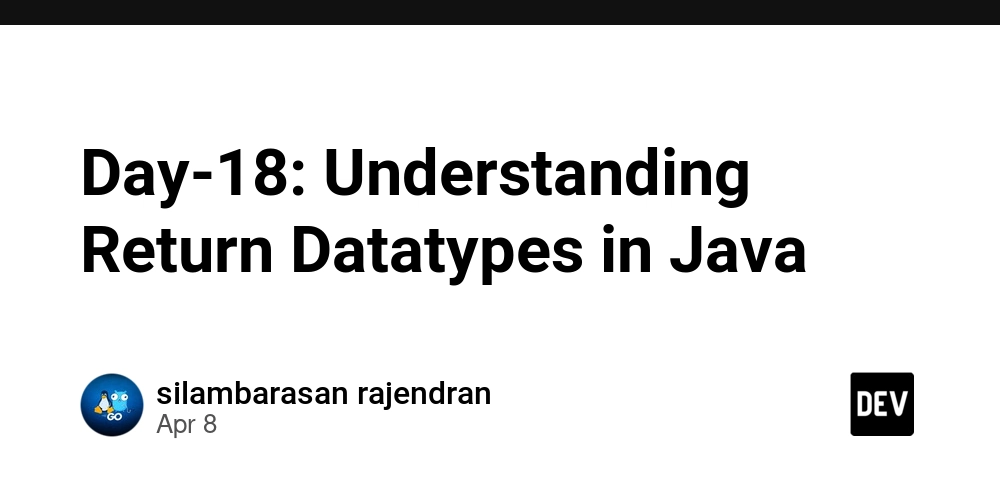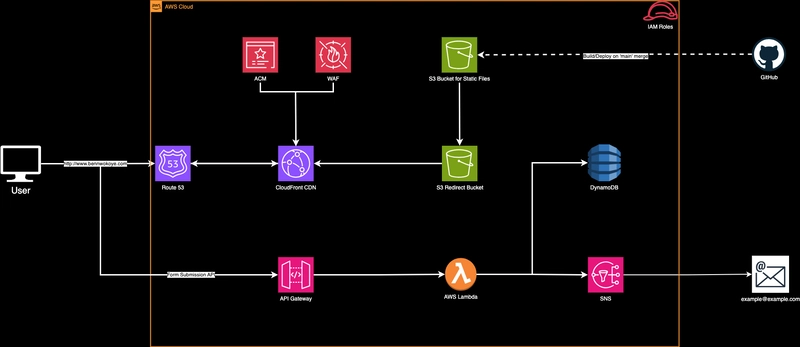Day-18: Understanding Return Datatypes in Java
Return Datatypes: A return type specifies what kind of value a method gives back when it finishes running. If a method doesn't return anything, we use void. 1). Returning an Integer public int add(int a, int b) { return a + b; } 2). Returning a String public String greet(String name) { return "Hello, " + name; } 3. public void printMessage(String message) { System.out.println(message); } the return datatype specifies what type of data a method will return, and it must match the actual returned value in the method body. If the method doesn't return anything, use void. Example code for Return Datatype: public class Calculator2 { // Adds two numbers and returns the result public int add(int no1, int no2) { // parameters & int retunr datatype return no1 + no2; } // Multiplies two numbers and returns the result public int multiply(int no1, int no2) { return no1 * no2; } // Divides two numbers, if no2 is not zero public void division(int no1, int no2) { // void return datatype if (no2 != 0) { System.out.println("Division result: " + (no1 / no2)); } else { System.out.println("Cannot divide by zero."); } } public static void main(String[] args) { Calculator2 calc = new Calculator2(); int result = calc.add(10, 20); System.out.println("Addition result: " + result); int multiplyOutput = calc.multiply(result, 2); System.out.println("Multiplication result: " + multiplyOutput); // Create a Calculator3 instance and use the subtractor method Calculator3 calculator3 = new Calculator3(); int subtractor = calculator3.subtractor(result, 5); System.out.println("Subtraction result: " + subtractor); int subtractor1 = calculator3.subtractor(multiplyOutput, 7); System.out.println("Subtraction by 7 result: " + subtractor1); calc.division(result, 2); // } } class Calculator3 { // Subtracts two numbers and returns the result public int subtractor(int no1, int no2) { return no1 - no2; } } Key Takeaways ✔ Every method must declare a return type (or void). ✔ Return types enforce type safety (Java checks compatibility). ✔ void methods are for actions, not computations. ✔ Always return the correct data type (or face compiler errors). Final Thought Understanding return types is crucial for writing correct and reusable Java methods. Whether returning a value or performing an action, always choose the appropriate type to make your code clear and reliable. Note: The formatting and structure were optimized for clarity with AI assistance. --------------------------- End of the Blog ------------------------------

Return Datatypes:
A return type specifies what kind of value a method gives back when it finishes running. If a method doesn't return anything, we use void.
1). Returning an Integer
public int add(int a, int b) {
return a + b;
}
2). Returning a String
public String greet(String name) {
return "Hello, " + name;
}
3.
public void printMessage(String message) {
System.out.println(message);
}
the return datatype specifies what type of data a method will return, and it must match the actual returned value in the method body. If the method doesn't return anything, use void.
Example code for Return Datatype:
public class Calculator2 {
// Adds two numbers and returns the result
public int add(int no1, int no2) { // parameters & int retunr datatype
return no1 + no2;
}
// Multiplies two numbers and returns the result
public int multiply(int no1, int no2) {
return no1 * no2;
}
// Divides two numbers, if no2 is not zero
public void division(int no1, int no2) { // void return datatype
if (no2 != 0) {
System.out.println("Division result: " + (no1 / no2));
} else {
System.out.println("Cannot divide by zero.");
}
}
public static void main(String[] args) {
Calculator2 calc = new Calculator2();
int result = calc.add(10, 20);
System.out.println("Addition result: " + result);
int multiplyOutput = calc.multiply(result, 2);
System.out.println("Multiplication result: " + multiplyOutput);
// Create a Calculator3 instance and use the subtractor method
Calculator3 calculator3 = new Calculator3();
int subtractor = calculator3.subtractor(result, 5);
System.out.println("Subtraction result: " + subtractor);
int subtractor1 = calculator3.subtractor(multiplyOutput, 7);
System.out.println("Subtraction by 7 result: " + subtractor1);
calc.division(result, 2); //
}
}
class Calculator3 {
// Subtracts two numbers and returns the result
public int subtractor(int no1, int no2) {
return no1 - no2;
}
}
Key Takeaways
✔ Every method must declare a return type (or void).
✔ Return types enforce type safety (Java checks compatibility).
✔ void methods are for actions, not computations.
✔ Always return the correct data type (or face compiler errors).
Final Thought
Understanding return types is crucial for writing correct and reusable Java methods. Whether returning a value or performing an action, always choose the appropriate type to make your code clear and reliable.
Note: The formatting and structure were optimized for clarity with AI assistance.
--------------------------- End of the Blog ------------------------------





























![[Webinar] AI Is Already Inside Your SaaS Stack — Learn How to Prevent the Next Silent Breach](https://blogger.googleusercontent.com/img/b/R29vZ2xl/AVvXsEiOWn65wd33dg2uO99NrtKbpYLfcepwOLidQDMls0HXKlA91k6HURluRA4WXgJRAZldEe1VReMQZyyYt1PgnoAn5JPpILsWlXIzmrBSs_TBoyPwO7hZrWouBg2-O3mdeoeSGY-l9_bsZB7vbpKjTSvG93zNytjxgTaMPqo9iq9Z5pGa05CJOs9uXpwHFT4/s1600/ai-cyber.jpg?#)










































































































































![[The AI Show Episode 144]: ChatGPT’s New Memory, Shopify CEO’s Leaked “AI First” Memo, Google Cloud Next Releases, o3 and o4-mini Coming Soon & Llama 4’s Rocky Launch](https://www.marketingaiinstitute.com/hubfs/ep%20144%20cover.png)





























































































































![[FREE EBOOKS] Machine Learning Hero, AI-Assisted Programming for Web and Machine Learning & Four More Best Selling Titles](https://www.javacodegeeks.com/wp-content/uploads/2012/12/jcg-logo.jpg)








































































![Rogue Company Elite tier list of best characters [April 2025]](https://media.pocketgamer.com/artwork/na-33136-1657102075/rogue-company-ios-android-tier-cover.jpg?#)








































































_Andreas_Prott_Alamy.jpg?width=1280&auto=webp&quality=80&disable=upscale#)






























































































![What’s new in Android’s April 2025 Google System Updates [U: 4/18]](https://i0.wp.com/9to5google.com/wp-content/uploads/sites/4/2025/01/google-play-services-3.jpg?resize=1200%2C628&quality=82&strip=all&ssl=1)










![Apple Watch Series 10 Back On Sale for $299! [Lowest Price Ever]](https://www.iclarified.com/images/news/96657/96657/96657-640.jpg)
![EU Postpones Apple App Store Fines Amid Tariff Negotiations [Report]](https://www.iclarified.com/images/news/97068/97068/97068-640.jpg)
![Apple Slips to Fifth in China's Smartphone Market with 9% Decline [Report]](https://www.iclarified.com/images/news/97065/97065/97065-640.jpg)




































































































































